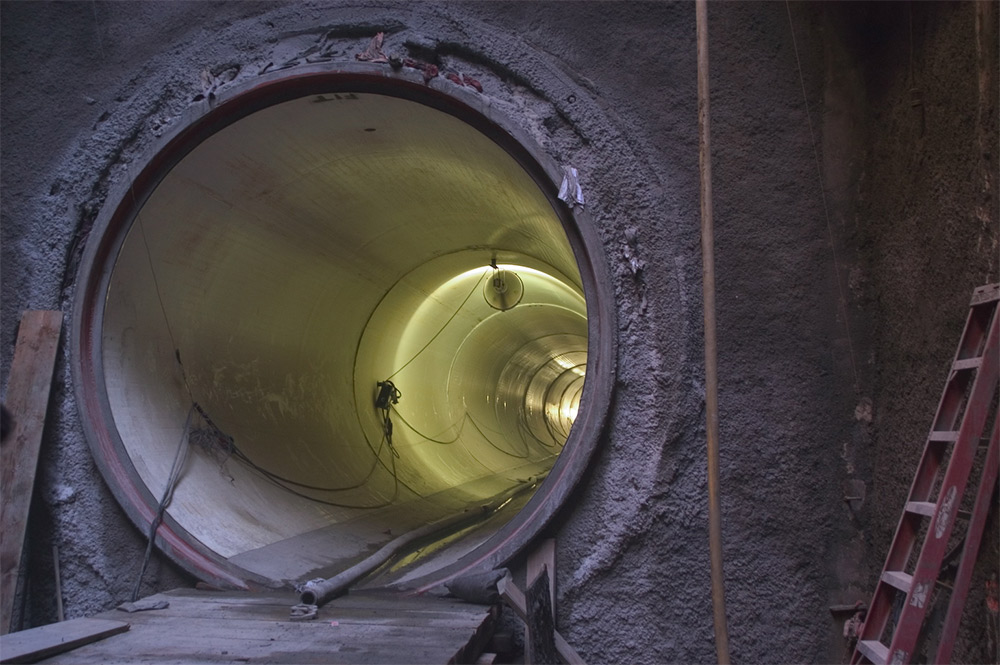Steve Rowell
A View into the Pipe: East Central Interceptor Sewer
2004
In collaboration with the Center for Land Use Interpretation.
![]()
A CLUI VIDEO TEAM WAS dispatched recently to interview the workers at an obscured construction site in the Baldwin Hills, near the Center’s main office in Culver City, California. The site, it turned out, was an access shaft above a connection point in the City of Los Angeles’ new main sewer line, a massive and complex construction project that has been going on underneath the city for over ten years.
Though sometimes obscured by opaque sound absorbing material attached to 20 foot tall fencing (such as at the corner of La Brea and Jefferson Boulevards), vertical shafts like this one are visible at several sites around the city. They allow workers, materials, and equipment—including large tunnel boring machines—to descend the 50-100 feet into the ground to the level of the new sewer tunnel.
The tunnel is being built in three stages, and together each section will comprise a 30 mile long sewer pipe that runs from Glendale to the Hyperion Treatment plant, on the coast next to Los Angeles Airport (where the waste is treated in one of the nation’s largest treatment facilities, then is pumped out to sea and dissipated through a series of shower head like diffusers). Once complete, this new main sewer line for the city, averaging 10-12 feet in diameter, will replace the old system of smaller pipes, some of which are brick lined tunnels made in the 1920s. The old system is so overwhelmed that in some areas, during storms, the city has parked trucks on the manhole covers, to keep raw sewage from spilling onto the streets.
Read more in the CLUI newsletter article about this project
